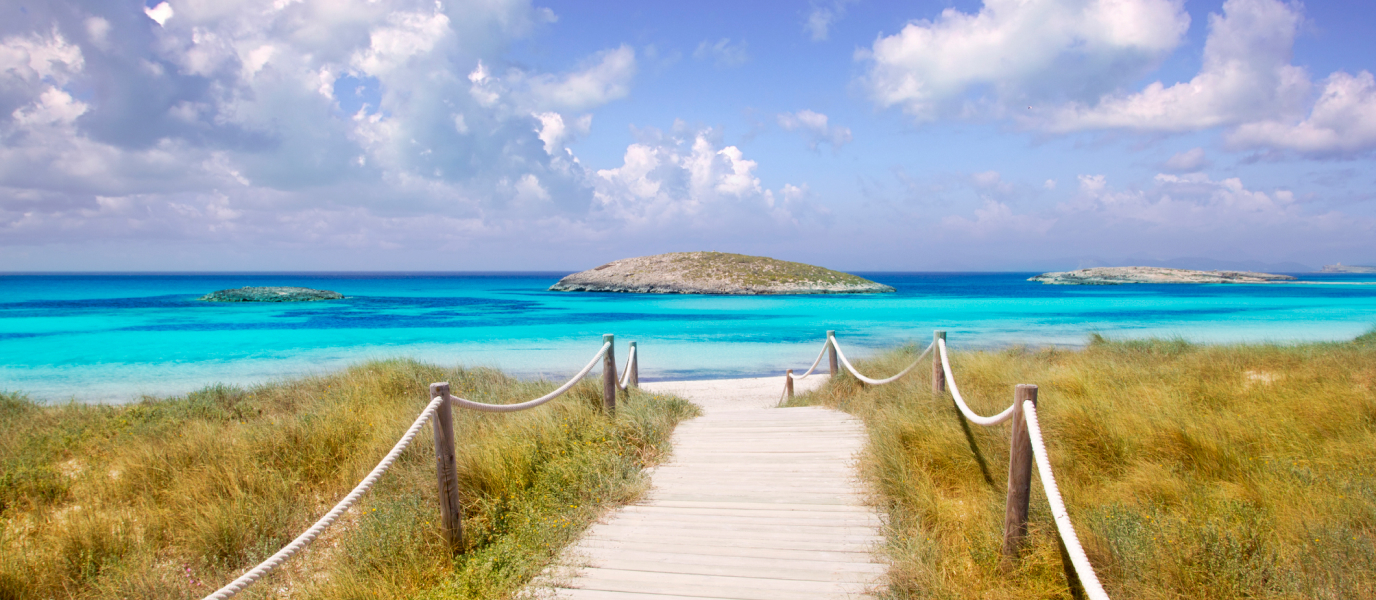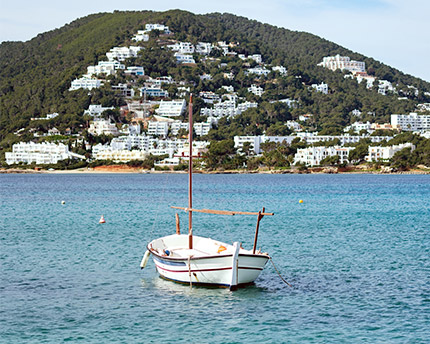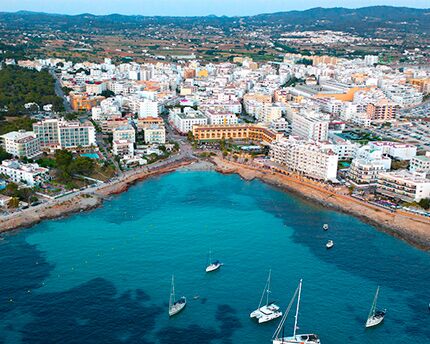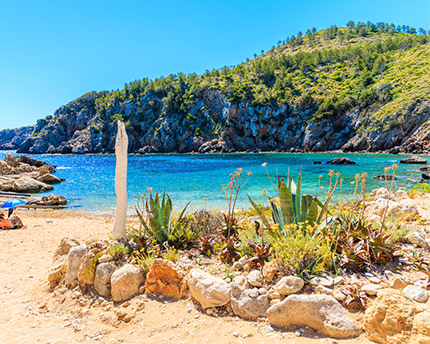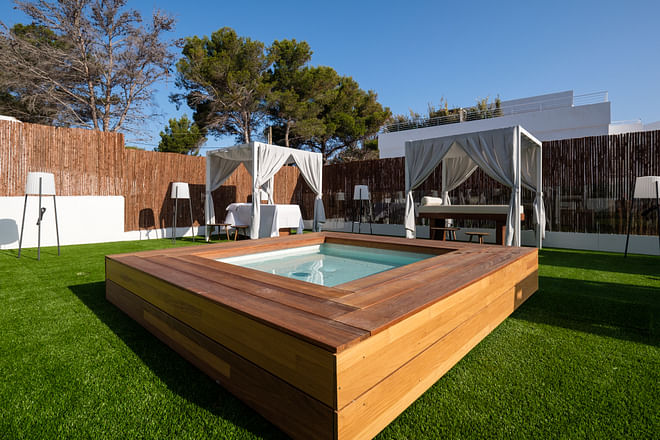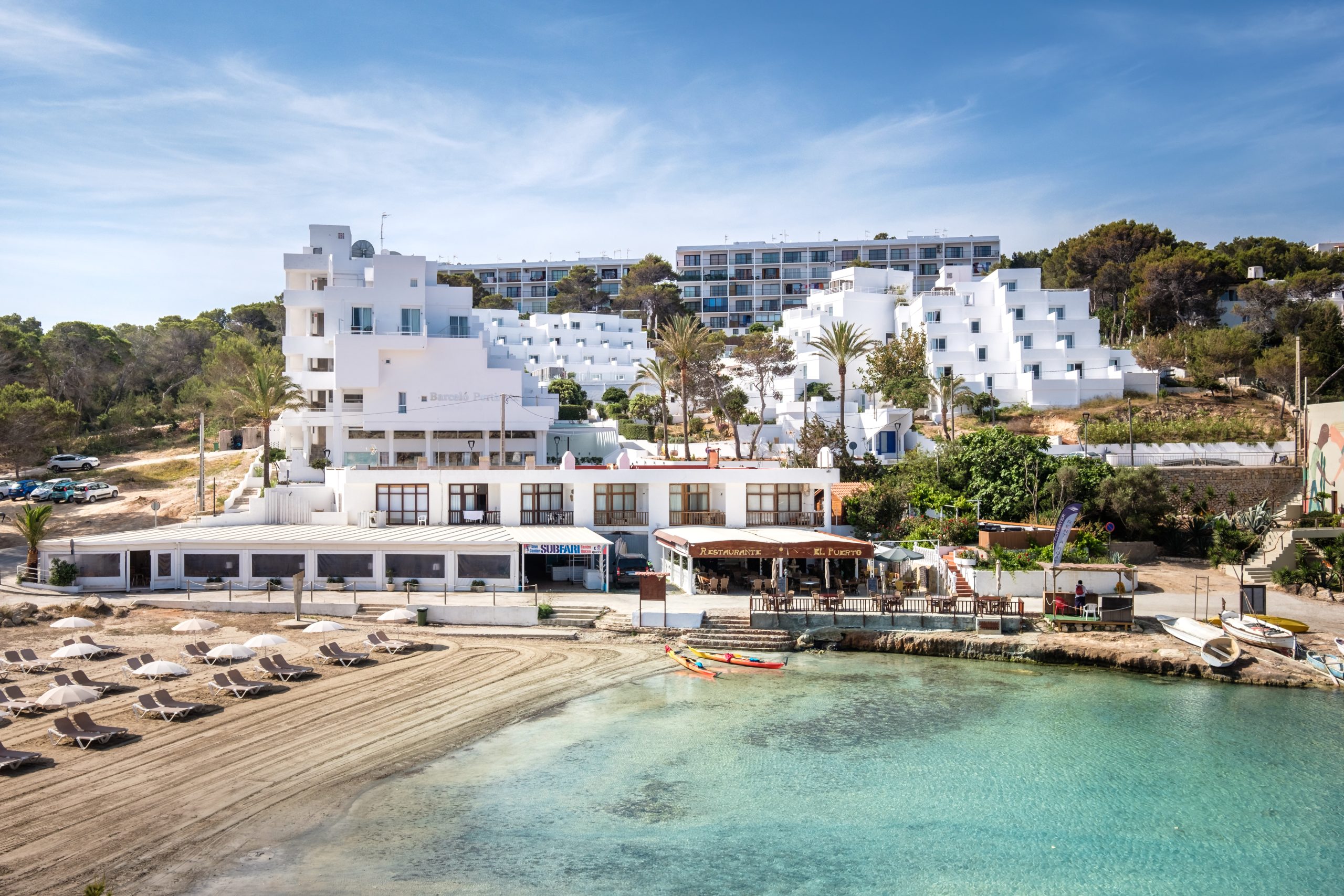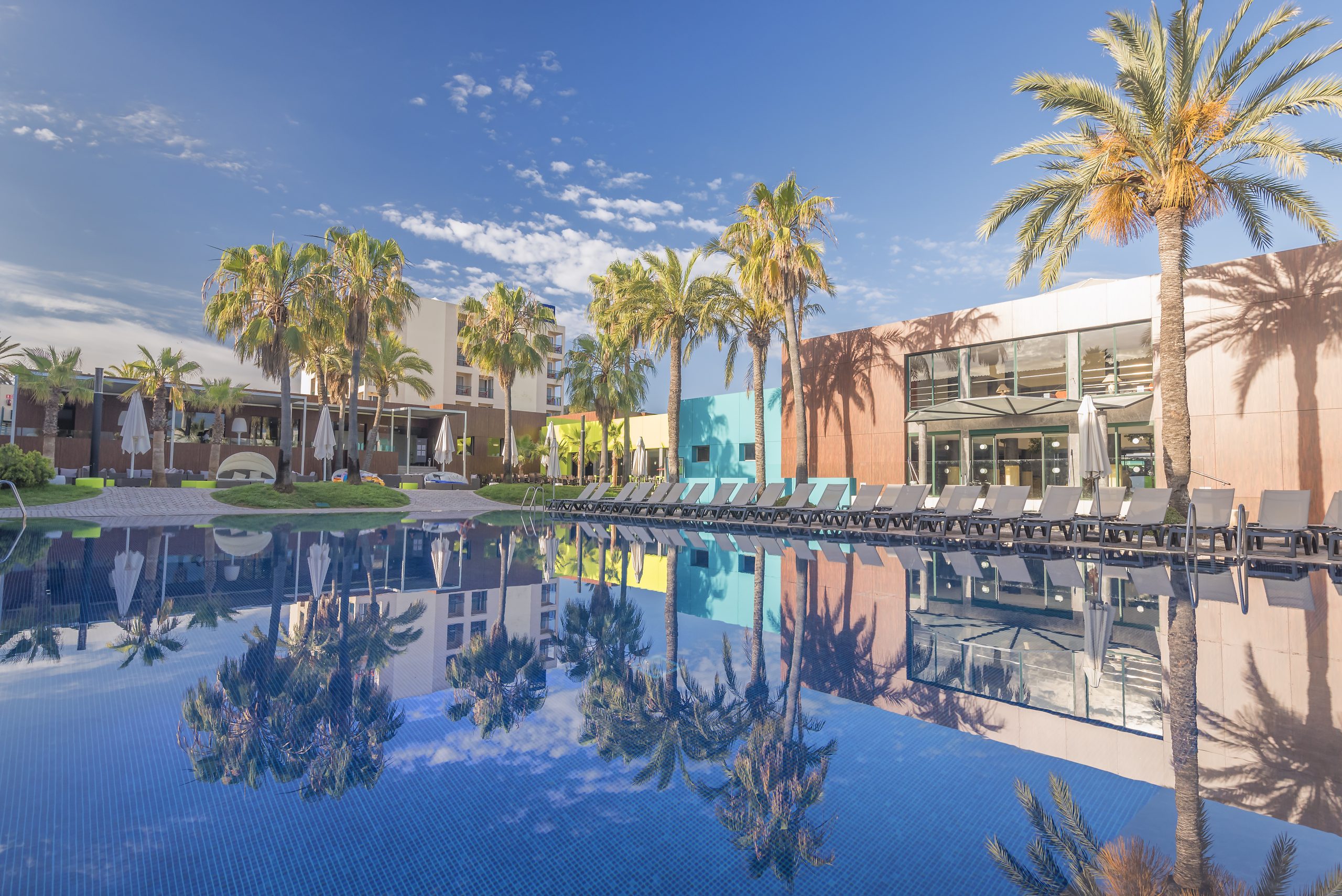They say there’s no misfortune that can ruin a trip to Formentera. Why? Firstly, this Balearic island has 2,950 hours of sunshine a year, an ingredient that contributes to it having the pure essence of the Mediterranean. And secondly, its relatively small size means it can visited from top to tail in just one day. The beautiful landscape is far more diverse than some think and is perfectly suited to motorbikes and bicycles, two modes of transport that are firmly established in Formentera.
If you’re still not convinced, wait till you hear about the wide range of attractions the island has to offer: long walks by salt-water lagoons, relaxed swimming in crystal-clear waters, sunsets from breath-taking viewpoints, boat trips at the foot of dizzying cliffs and bohemian markets in white villages. Has that got your attention? If want to know what else there is to see and do in Formentera, keep on reading.
La Mola and Barbaria lighthouses
Cabo de Berbería lighthouse ―Cap de Barbaria in Catalan― and La Mola lighthouse are two of the most visited places in Formentera. Located at far ends of the island and connected by the main road – PM-820 – it takes no more than half an hour to travel from one to the other. Each lighthouse has spectacular views at twilight and the early hours: La Mola at sunrise and Cap de Barbaria at sunset.
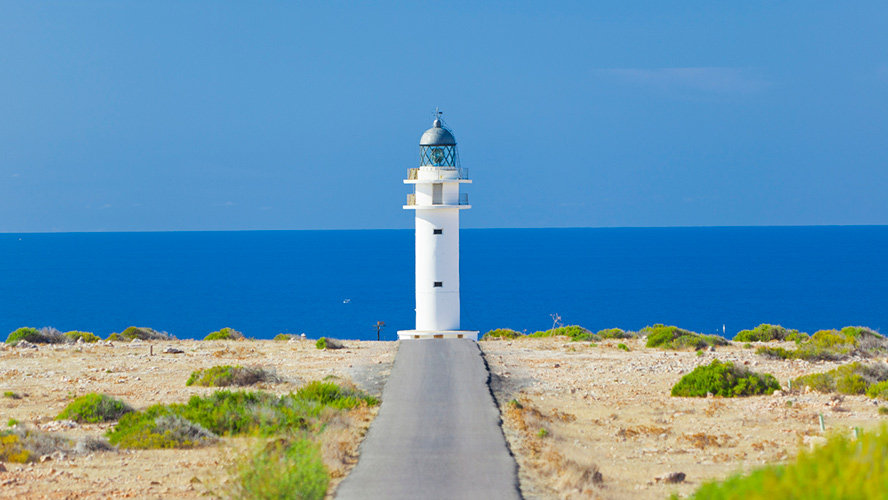
Cala Saona
Another firm recommendation for watching the sun go down is Cala Saona, a small sandy cove at the far west of Formentera sheltered by two strips of rock – Punta Rasa and Caló d’en Trull – which run parallel into the sea. To reach it you walk along a pretty wooden walkway that leads between dunes and pine trees. Once there you’ll find a lovely corner of the Mediterranean where the unspoilt-looking location works in harmony with a hotel, restaurant and beach bar specialising in gin and tonics. Nudism is permitted here and the diving is fantastic.
Ses Illetes and Llevant
One of the most famous places in Formentera is Illetes beach – Playa de Ses Illetes in Catalan. It’s most unusual feature (of many) is that it lies on the Es Trucadors peninsula, a type of extremely narrow isthmus that runs northwards towards nearby Espalmador island. This means that Ses Illetes has two shores separated by a stretch of sand that is less than 25 m wide. Its crystal-clear waters are also home to the largest field of Mediterranean tapeweed in the world, made a UNESCO World Heritage Site in 1999. And if you add the fact that the beach has several of the best restaurants on the island, such as Es Molí de Sal and Restaurante Es Ministre then a visit becomes compulsory.
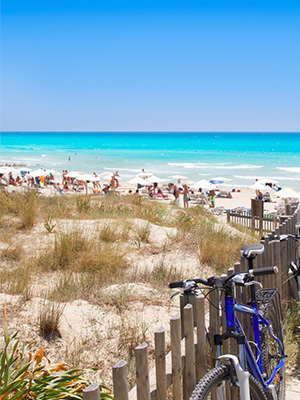
But don’t miss Levante beach – Llevant in Catalan – which is very close to Illetes but still on the ‘big’ island of Formentera. It’s very similar to Illetes but is more peaceful and has views of Espardell island.
Caló des Mort, a delightful cove
You’ll find this tiny cove with clear waters and white sand to the south of the island, in the wide bay of Migjorn. It’s easy to reach but remember that it doesn’t have any beach facilities. So if you want to spend the day here, make sure you come prepared. It’s also the departure point for several hiking trails and one of the most popular is the route that leads to La Mola lighthouse.
Es Arenals beach
Es Arenals beach is one of the biggest in Formentera and is right next to Cala des Mort. Unlike the previous one, this beach has plenty of facilities, including sunbed and parasol hire, watersports equipment, hotels, restaurants and beach bars.
However, as we mentioned above, all distances are relative in Formentera and while Es Arenals is on the south coast, a gentle 20 minute walk takes you to the north coast.
S’Espalmador
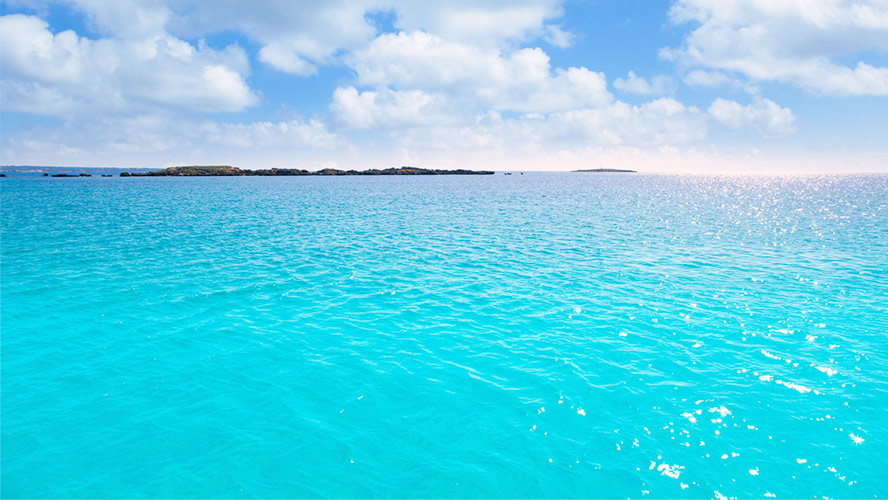
Si tuviéramos que poner un ejemplo de isla virgen en el archipiélago balear, ese sería, sin duda, el de la isla de Espalmador. Situada al norte de Formentera, a tan sólo unas decenas de metros de su punta norte, esta diminuta isla tan sólo es accesible en barco, ya sea utilizando una embarcación particular o el ferry que realiza viajes diarios. Una vez en la isla, recomendamos recorrerla de punta a punta, para no perdernos todos los atractivos que esta tiene para ofrecer. Por un lado, aquí se encuentra la torre de Sa Guardiola, el puesto de vigía más antiguo de Formentera. Asimismo, el islote de Espalmador nos ofrece también numerosas playas de naturaleza virgen, como la playa de S’Alga ―la más grande y accesible de la isla―, o la playa de la Torreta. Finalmente, para los amantes de la fotografía y la ornitología, recomendamos visitar la laguna de s’Espalmador, un espacio de barro natural que reúne condiciones excepcionales para la vida de las aves.
Villages in Formentera you can’t miss
Es Pujols
Formentera is an island of contrasts, and now it’s time to move on from its wildest side to more tourist-orientated areas. Es Pujols, in the north of the island, next to famous Estany Pudent, is the most central area of the island and therefore the place where most tourists head when they come to visit. Full of restaurants and different types of accommodation, Es Pujols is definitely the most reasonably priced option. It even has a small seafront promenade where you’ll find a charming hippy-style market at sunset.
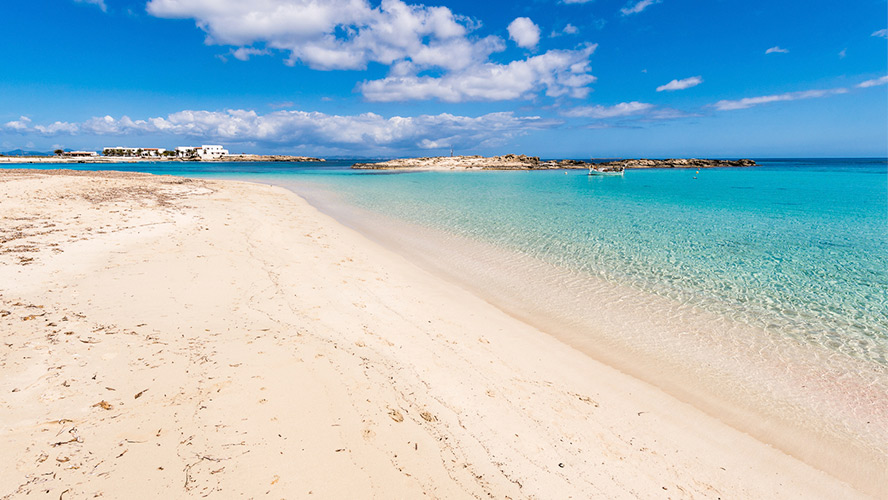
On the other side you can visit Es Pujols beach, a lively stretch of sand with tiny nearby islands. It’s one of the best places to do watersports and hire boats.
Sant Francesc Xavier
The capital of Formentera is home to its governmental bodies and the main services on the island. It’s main tourist attraction is its austere parish church, the chapel of Sa Tanca Vella and the restored cemetery of Fosser Vell. A visit can be rounded off with shopping in its sweet boutiques and stores selling handcrafted goods
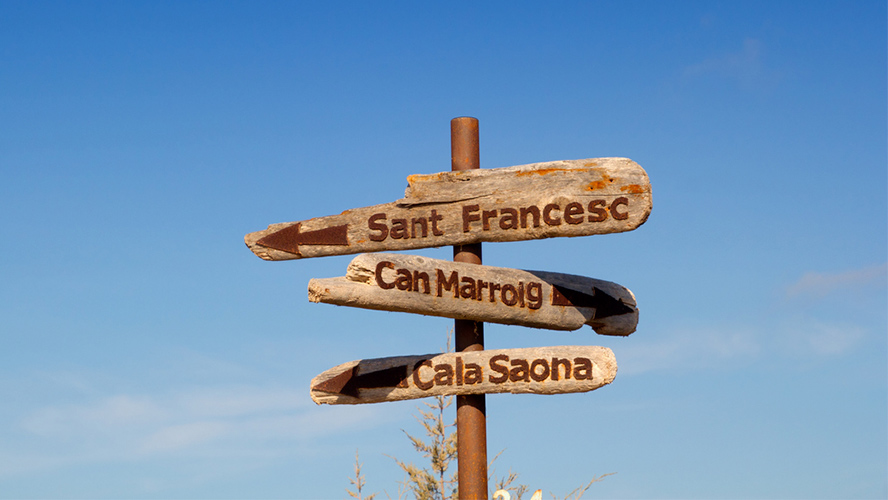
Sant Ferran de ses Roques
Located in the centre of Formentera, it still lives off the memory of the first bohemian travellers that settled in this tiny corner of the Mediterranean. Make sure you stop for a drink at Fonda Pepe, a meeting point for free spirits. There isn’t a great deal to see in the historic centre, apart from some churches, but it’s worth visiting the mills and defensive towers nearby.
El Pilar de la Mola
This may be the most peaceful village on the island, except for Wednesdays and Sundays (between October and May) when there is a craft market. Come and have a stroll around, wander along to the end of the village to see the 18th century church of El Pilar and stop to eat in one of the restaurants. Famous La Mola lighthouse is just a couple of kilometres away.




































































